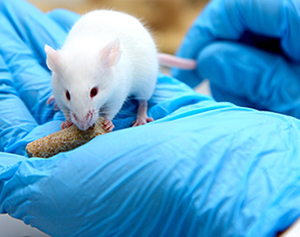160,000 animals put down after experiments in Irish universities
Almost 160,000 animals have been put down by Ireland’s top universities over the past four years after being used in research experiments.
The most commonly used animals were mice, rats and fish, but others including rabbits, pigs, birds, lizards and seals were also used in drug trials.
Animal rights campaigners have called for an end to the practice, which they say is cruel and produces poor results as most drugs that test well on animals do not work on humans.
But the universities argue that the research contributes to scientific knowledge and say testing on animals is done to the highest ethical standards.
Documents released under freedom of information legislation show that Trinity College Dublin (TCD) used the most animals, followed by University College Cork (UCC).
Last year TCD used 30,983 mice and 2,813 rats in its research — an increase from the 23,232 and 1,963 used the previous year. It has used 112,127 of the animals since 2018, all of which were put down following the tests.
UCC uses a wider variety of animals in its research. Last year it used 1,843 fish, 1,590 mice, 259 rats, 14 pigs, five hares and one rabbit. It also used 320 birds and five seals, which were set free following the studies, unlike the other animals that were euthanised. In total, the university used more than 40,000 animals in its research over the past four years.
University College Dublin (UCD) used 2,789 animals between 2018 and 2020, mostly made up of mice and rats, but also including just over 100 guinea pigs.
Maynooth University used just under 2,500 mice and rats between 2018 and 2021. Dublin City University (DCU) used the fewest animals over the past four years, at just under 1,000, mostly made up of mice and rats but also three fowl in 2019.
DCU said: “The number of animals that DCU uses in procedures has been falling over the past several years, and is expected to continue to fall. DCU used no animal in a procedure in the last eight months of 2021, and to date in 2022 we have used no animal in a procedure.
“While the drop in the number of animals used was due in part to the pandemic, it was not the main factor. Other factors included scientific advances that, in some cases, allowed the university to replace the use of animals with non-animal methods or to use fewer animals than would have been needed to obtain the same information a few years previously, and also the stage that had been reached in some research projects.”
The numbers used for each university remained relatively stable year on year, but dipped slightly during the pandemic in 2020. For example, TCD used 26,500 animals in 2018, 26,597 in 2019, 25,234 in 2020, and 33,796 last year.
Peta, the global animal rights organisation, has called for an end to the practice. It has argued that 95 per cent of drugs that test safe and effective on animals “fail or cause harm” in human clinical trials.
John Carmody, an activist who founded the animal rights group Aran, said yesterday: “Animals are not test tubes with whiskers. They are capable of feeling pain and suffering just like a dog or cat.
“We’ve turned a corner on the use of animals in cosmetics testing, now it’s all to play for in ending their use for experiments. We can no longer witness this ongoing catalogue of cruelty and Irish universities need to play their part now.”
The number of animals used in research in Ireland halved after a new EU directive came into force in 2013, which banned testing for cosmetic products. In 2013, 277,559 animals were used, followed by 224,249 in 2014. Numbers dropped to about 140,000 in 2019 and 2020.
Laura Broxson, spokeswoman of Ireland’s National Animal Rights Association, told Newstalk Breakfast in February that testing on animals does not make sense.
“You can’t really predict how a drug is going to react in a human by testing it on a mouse or a rat or even a monkey,” she said. “That is why, when animal tests are passed, it moves on to human trials. It doesn’t just jump to sales, doctors and hospitals, it goes through a series of human trials.”
TCD said it only uses animals for biomedical research that would “contribute to the advancement of knowledge” likely to lead to the “improvement of the health and welfare of animals and human beings”.
It said that all studies gave consideration to the welfare of animals and minimised the numbers used.
“Scientists in Trinity College are required to demonstrate that there are no alternatives available before the ethical review process will permit the procedures,” it said.
UCC said the use of animals in “state-funded scientific research” had produced “beneficial results to human health that could not otherwise have been achieved”. It said the animals were used for research into conditions including cancer, Alzheimer’s, Parkinson’s, irritable bowel syndrome, Crohn’s disease, anxiety and depression.
UCD said its studies were carried out to the “highest legal and ethical standards” and that euthanasia was carried out in “the most humane manner”.
“The aim of all such work done is to add benefit to human and animal health and increase scientific knowledge,” it said.
Earlier this year Swiss voters rejected a proposal by animal rights activists to become the first country to ban medical and scientific experiments on animals.
- Ben Haugh


